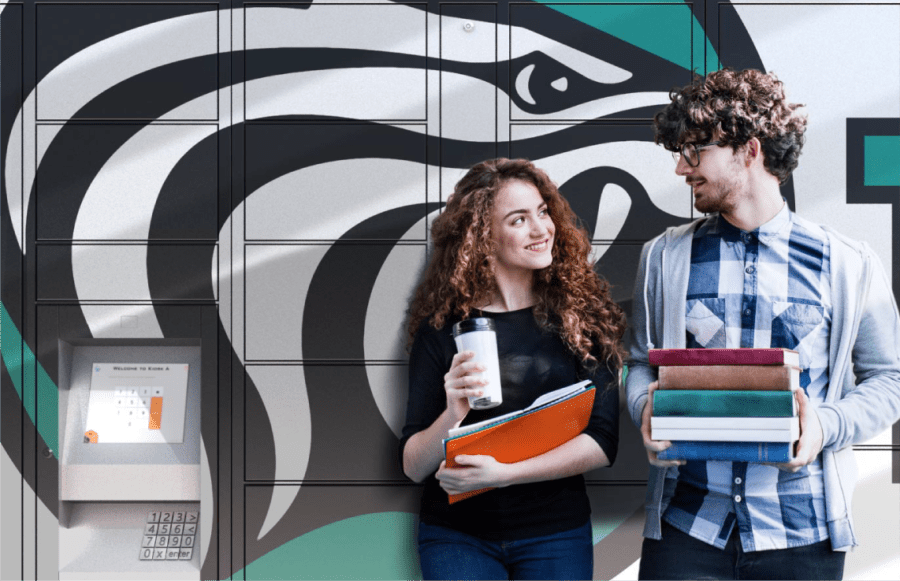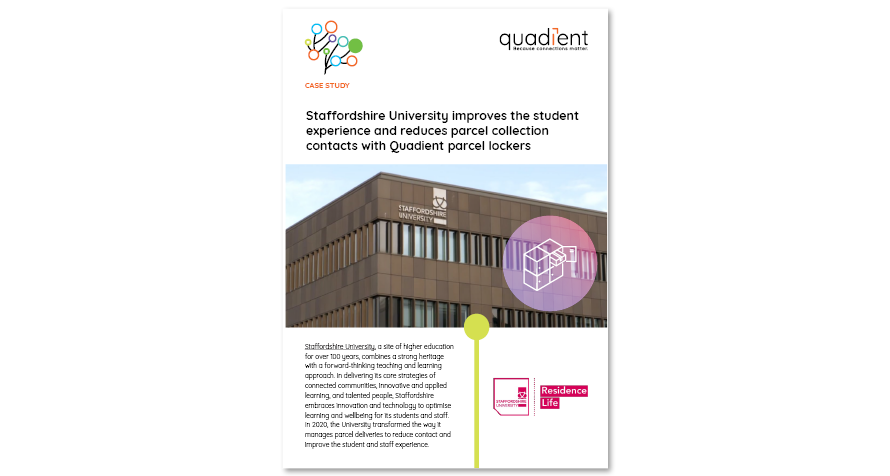
University
How to Attract Students to Your University
Written by: Parcel Pending
5 Min Read
Published: April 26, 2022
Updated: April 15, 2025
2020/21 saw the UK’s total full-time student population grow by a staggering 8%, according to HESA data. With competition among universities for top students fiercer than ever, universities need to step up their game to stand out amongst their competitors.
Here, we discuss what the modern student expects from university life, and which facilities and amenities can help to attract students to your university.
The Modern Student
The majority who make up most of today’s university-bound students are Gen-Z, also known as “Zoomers” – a generation of digital natives who have never known a time without a smartphone, let alone the internet. Born between 1995 and 2010, Gen Z comprises of 12.6 million people in the UK, and around 2 billion worldwide!
As a generation who frequently engages on platforms like Twitter, TikTok, and Instagram, and who have lived through some of the most significant events of our time, they tend to view the world and university radically different than any generation before them.
Gen Z is the most diverse generation to date, with different values and expectations for the world around them. These differences between them and previous generations are pushing universities to rethink their offerings, uprooting the campus landscape as we know it.
When deciding on a university, of course, great teaching quality is a priority, but nowadays students expect more from university life. Ranking tables exist for everything from the quality of social events, food, campus amenities, sports activities, and student accommodation. Therefore, to match the needs of the modern student and provide the experiences they seek, it is time to rethink your campus’ structure to ensure you are offering the best amenities to recruit, retain, and engage with this generation.
The Most Diverse Generation Yet
Gen Z is the most diverse generation yet and the proportion of students from each minority group is growing.
Ethnicity
In 2019-20, Office for Students reported that 13.3 per cent of undergraduate entrants were from an Asian background, 9.7 per cent were black, 4.8 per cent were from a mixed ethnic background, and 2.2 per cent were from other minority ethnic groups.
Students with Disabilities
Disabled students now make up a sizeable minority of the student population. In 2018-19, 14.3 per cent (more than one in every eight) students studying in England declared at least one disability.
Ethics and values underpin everything that Gen-Zs do.
This generation demands diversity and inclusion when it comes to disability, race, gender, ethnicity, and sexual identity. They vote with their feet (social marches), their thumbs (taking to social media and other digital mediums), and with their wallets (boycotting brands).
Finances
In total, UK students spend £12.7 billion per year, which averages out at around £5,322 per year per uni student. After the essential bills, Gen Zs most common outgoings are on fashion items, restaurants and takeaways.
More than two-thirds of students rely on maintenance loans to cover the essential bills, but they don’t cover all living expenses, which means many of those who don’t have financial support from their parents rely on part-time jobs to fund their non-essentials – social activities, shopping, hobbies etc.
According to research by the NUS and Future Finance, feelings of financial insecurity overwhelm British students. More than one in three students (36%) worry about their finances so much that it affects their mental health.
Now that both the cost of living and university fees are the highest they’ve ever been, the implications for universities are clear: demonstrate the positive return on investment.
How can universities do this?
- Cite specific graduate outcome data so that prospective students have realistic expectations about the typical hiring process for recent graduates and what their career growth trajectory might look like.
- Showcase unique degrees and experiences on campus that are exclusively available to students.
- Expand your offering of extra-curricular activities; sports clubs, wellness activities and networking opportunities.
- Don’t be afraid to embrace new pricing models that include different tuition for hybrid classes. It’s also important to include price transparency to show students the true price of their education, including books, supplies, and housing.
- Ensure amenities and services provide real everyday value for money and give students a positive experience they will never forget. Give students the flexibility to access amenities at their own convenience.
- Invest in technology which helps to cut operational costs. Reduce the number of outdated manual processes and enable staff to provide services which promote happier student living.
Embracing Technology
At the start of COVID, almost 50% of universities and colleges had no online programs at all! Today, that is a vastly different story, with a virtual learning community emerging at nearly every university.
Because Gen Z has grown up surrounded by technology, they tend to view tech differently than any other generation. Gen Z is constantly searching for innovation, prospective students seek learning environments that integrate technology along with their studies.
Most importantly, Gen Z values practical applications of their learning. Given their need for a positive return on investment in their education, they are looking for universities that arm them with practical skills for life.
High-quality and well-maintained facilities are essential for keeping students happy, enhancing the learning experience, and promoting the university’s brand, says Shaun Johnson, business development manager at Integral UK.
Digitally leading universities also consider how technology can elevate the student experience beyond the classroom. After all, a student deciding between two universities will almost certainly weigh up the facilities and amenities that are on offer.
Operationally, technology can improve administrative tasks and ensure the smooth running of everyday processes, giving university staff time back that can be spent improving the student experience. Smart university lockers are one such example—offering automated delivery and return processes that free up staff and delight digitally native students. Gen-Z students are used to the instant gratification that technology can provide. Time-consuming, unsustainable, and manual processes are a thing of the past.
And now, more important than ever before, the right technology can reduce contact between students, and between staff and students, helping to increase health and safety and giving peace of mind to students and their parents.
Case Study: Download here
Staffordshire University, a site of higher education for over 100 years, combines a strong heritage with a forward-thinking teaching and learning approach.
In delivering its core strategies of connected communities, innovative and applied learning, and talented people, Staffordshire embraces innovation and technology to optimise learning and wellbeing for its students and staff.
Even pre-pandemic, the University saw unprecedented growth in parcel volumes;
“Over the years, we’d inherited old processes and ways of doing things that worked fine before the online shopping boom,” explains Rhys Stevens, Accommodation Officer (allocations and systems) at Staffordshire University.
In 2020, the University implemented Parcel Pending by Quadient Smart University Lockers, transforming the way it managed parcels to reduce contact and improve the student and staff experience.
Contact us today to learn how Parcel Pending by Quadient lockers can elevate the student experience while providing your campus with a safe and modern delivery and return solution.




